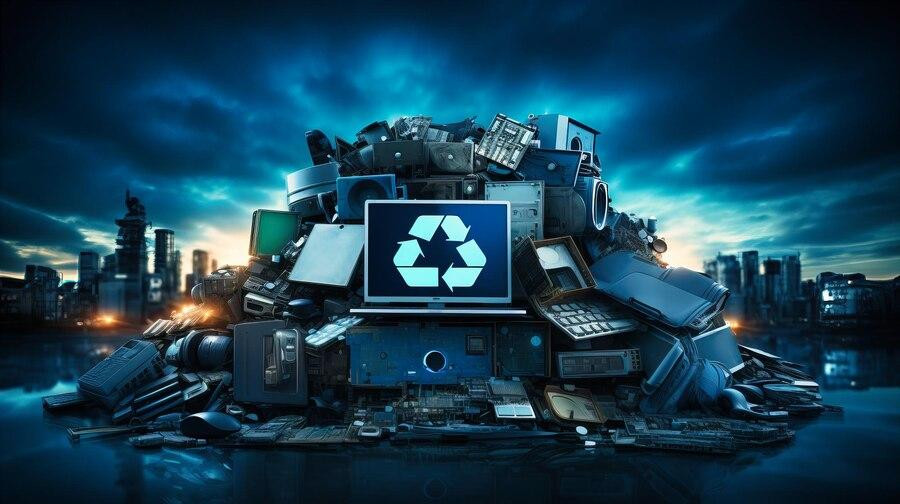In our digital age, technology evolves at an unprecedented pace, resulting in a continuous stream of electronic devices entering and exiting our lives. This rapid turnover of gadgets leads to a significant environmental challenge: electronic waste, or e-waste. This blog aims to delve into the environmental impact of e-waste and explore responsible ways to manage this hidden hazard, emphasizing the importance of recycling and integrating a circular economy approach.
The Rising Tide of E-Waste:
E-waste comprises discarded electronic devices, ranging from smartphones and laptops to large appliances like refrigerators and washing machines. As our dependence on technology grows, so does the volume of e-waste generated globally. According to recent studies, approximately 53.6 million metric tons of e-waste were generated worldwide in 2019, and this number is expected to increase in the coming years.
Environmental Impact of E-Waste:
The improper disposal and management of e-waste pose severe environmental risks. Many electronic devices contain hazardous materials such as lead, mercury, cadmium, and brominated flame retardants. When these substances leach into the soil and water, they can contaminate ecosystems, harm wildlife, and even pose health risks to humans through the food chain.
Responsibly Managing E-Waste:
- Recycling as a Solution:
One of the most effective ways to mitigate the environmental impact of e-waste is through recycling. Electronics recycling involves extracting valuable materials from discarded devices and diverting harmful substances away from landfills. Organizations specializing in e-waste recycling responsibly handle the dismantling, disposal, and recovery of materials, contributing to resource conservation.
- Circular Economy Approach:
Adopting a circular economy model is crucial for sustainable e-waste management. Instead of the traditional linear approach of "take, make, dispose," a circular economy emphasizes the continuous use of resources through recycling and reuse. Manufacturers are encouraged to design products with longevity in mind, making repair and refurbishment easier, thereby extending the lifespan of electronic devices.
The Role of Legislation:
Governments and regulatory bodies play a pivotal role in addressing the e-waste challenge. Implementing and enforcing strict regulations regarding the disposal and recycling of electronic devices can significantly reduce the environmental impact. Many countries have introduced legislation that requires manufacturers to take responsibility for the entire lifecycle of their products, from production to disposal.
Global Initiatives in E-Waste Management:
Several international initiatives focus on tackling the e-waste problem. The Basel Convention, for instance, aims to control the transboundary movement of hazardous waste, including e-waste, and promote environmentally sound management. Collaborative efforts between governments, businesses, and environmental organizations are essential to creating a comprehensive and effective global framework for e-waste management.
Consumer Awareness and Responsibility:
While legislation and global initiatives are essential, individual actions also play a crucial role in addressing the e-waste challenge. Increasing awareness among consumers about the environmental impact of improper e-waste disposal can encourage responsible behavior. Choosing electronic devices with recyclability in mind and properly recycling old devices contribute to sustainable e-waste management.
Conclusion:
E-waste is indeed a hidden hazard that demands our attention and collective action. Understanding its environmental impact is the first step toward responsible management. By prioritizing recycling, embracing a circular economy approach, enforcing legislation, and fostering consumer responsibility, we can mitigate the negative effects of e-waste on our planet. As stewards of the environment, it is our responsibility to ensure that the digital progress we cherish does not come at the cost of irreparable harm to the world we inhabit. Together, let's pave the way for a sustainable and technologically advanced future.

